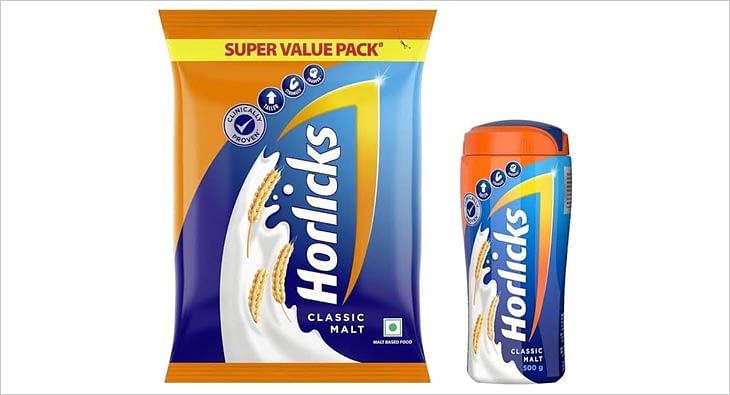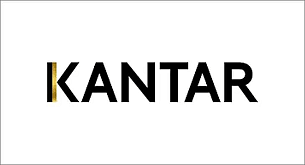We will scale up ad spending next year: Shubham K, Cleartrip
Cleartrip’s brand head speaks to e4m about the new Clear Advantage offer, their marketing plan for the next year, and more

The travel industry this year saw a huge boom as people left the fear of the pandemic behind them and head out to enjoy vacations. Not just leisure travel, but business travel as well as the new trend of workcation helped this pandemic-battered industry to get back to its feet. Online booking agency Cleartrip has taken a step further and introduced new offers to grab the attention of its customers and acquire new ones. In a conversation with exchange4media, Brand Head Shubham K talks about the launch of new Clear Advantage offering, the ad spending plan for next year and the future of travel sector in 2023.
Edited Excerpts
Can you tell us more about Clear Advantage?
We came up with a whole bouquet of products called Clear Advantage. The name is very carefully chosen, because we believe that they are our clear advantage. So, there are about three or four such products and there are more which are in the pipeline. In fact, there are a couple which have also gotten recently launched. So, the first is what we call CT Flex Max. CT Flex Max actually just allows you to cancel or modify your domestic flights, or dates of those flights absolutely free of cost. The second product is a no cost EMI for international flights. We've seen that international travel is coming back with a vengeance. A lot of people want to travel but obviously the fares have been expensive because it's pretty much the season which is coming up. Especially when people travel internationally the sum of the fares could be very discretionary, it almost may be a barrier for you to want to travel. Therefore, we're offering a free no cost EMI for three months. The third offering is hotel cancellations or you may call it easy hotel cancellation. On more than 20,000 hotels we are offering that you can cancel and get the full refund up to 24 hours before check in. The last one, which we believe is one of our key USPs, is not really a separate offering per se, but our consumer experience team works very hard to make this happen. It is instant refund initiation.
What media mix are you using to promote these offers?
We heavily rely on digital for most of our media plans. We do that because we believe that a significant proportion of our present customers and our potential customers rests on digital. So, digital is going to be pretty significant part of the mix. And when I say digital, I'm talking about the entire Facebook family of apps and services, the entire Google family of apps, including YouTube, as well other channels like Spotify are part of the mix. We're also looking at television, so we are keeping a significant offline mix in this as well. Other than that, we are looking at, activating social in a very, very big way. Beyond that we are looking at one or two OTT's in the mix. We're also evaluating a couple of sporting events which are coming up which should also start very, very soon.
How does ClearTrip’s marketing and ad spending look like for the next year?
While we've been active through the year, a lot of our spends and a lot of our big marketing campaigns have been skewed towards the latter half for a couple of reasons. One, because of the big sale event and two also because this is when we believe we're ready with Clear Advantage and ready to take it to market. We're looking to coincide with the big travel season as well. So next year is going to be slightly more scaled compared to this year, if not similar. And next year, we're going to of course start a little early in terms of going big with our campaigns as well. But spend-wise, it would be a slight scale up. I can't tell you the exact numbers. It will be a little more spread out, it will be sort of a little more front-loaded compared to this year where we started somewhere towards the later part of the year.
What do you think will be the future of travel sector in 2023?
We’ve actually seen a lot of optimism in travel as a sector, especially in the last few months. It is coming back and it is coming back with a vengeance. On international, we've seen a massive renewal also starting earlier this year, especially in the short haul sectors, like Southeast Asia, all of the Middle East is where we've started seeing a lot of return to pre COVID levels as well. Of course, I think one report says that by 2024 is when it will come back to exactly the same levels as 2019, which is the pre- COVID levels. But I think if I remember the numbers correctly, this year, it's getting back to roughly about the 70% to 80% of pre-COVID levels already. So yeah, in both domestic and international, we are seeing a lot of renewed optimism.
Read more news about Marketing News, Advertising News, PR and Corporate Communication News, Digital News, People Movement News
For more updates, be socially connected with us onInstagram, LinkedIn, Twitter, Facebook, Youtube, Whatsapp & Google News
About 60% Instagram influencers in India have fake followers: Report
As per a media report, influencer marketing platform KlugKlug has found that only 2.48 million profiles out of the 8 million have ‘high-quality’ followers
Two of three Instagram influencers in India have more than 60 per cent fake followers, a report by influencer marketing platform KlugKlug shows.
This is particularly true for the beauty and fashion sector, the report noted.
Other countries that have influencers with fake followers are Brazil, the UAE and Indonesia.
As per media reports, such Instagram fake followers can be roped in for as little as Rs 10 to a high of Rs 1,000.
According to Klug Klug India, only 2.48 million profiles out of the 8 million have high-quality followers.
A number of other categories have also been buying fake followers, media reports have noted.
As per a media expert, quoted in the reports, brands are finding it difficult to identify and curb the menace of fake followers and bots.
In a recent setback for influencers the Central Consumer Protection Authority (CCPA) has said those promoting activities like gambling and betting are equally liable as the companies promoting the same.
15% consumers enhance their user experience through virtual assistants: Kantar report
According to Soumya Mohanty, Managing Director & Chief Client Officer- South Asia, Insights Division, Kantar, less than 1% of ads get tested due to lack of time
Marketing data and analytics firm Kantar has unveiled a report that studies the burgeoning AI market to dish out actionable insights for marketers. Within AI, virtual assistants are the fastest growing segment. The report noted that 15% consumers enhanced their ‘user experience through virtual assistants’. This segment is the fastest growing at 27% YoY.
According to the study, while ‘fitness’ and ‘social media’ apps are amongst the leading categories, driving AI adoption (with an average of 2.3 AI led features embedded in these applications), segments like ‘BFSI’, ‘job search’ and ‘short video’ apps are relatively slow in AI adoption, with an average of 1.2 features each. Entertainment apps, digital commerce and pharmacy apps stand somewhere in the middle with 2.0 & 1.8 AI features being adopted, respectively.
Additionally, the report said that while 90% of marketing and sales leaders think their organisations should be using AI “often”, 60% said their organisations “rarely or never” do. Speaking to exchange4media, Soumya Mohanty, Managing Director & Chief Client Officer- South Asia, Insights Division, Kantar highlighted that currently there are a lot of organisations who know that there is something called AI, but haven’t yet figured out how it could help them holistically.
“A lot of the AI just gets used for efficiency purposes, so repetitive tasks get automated,” Mohanty pointed out. Data also plays a big role in why certain organisations are struggling with how to use AI.
For instance, Mohanty explained that in segments like D2C, telecom etc. there is a lot of primary or first-party data. So being able to leverage AI also gets easier. “It's the traditional large sort of FMCG type companies where data sits in silos. You don't really have one single source of data where it's a little difficult to use the full power of AI, because the full power of AI also needs a lot of data sitting in a structure that you can use,” she added.
So, can AI help marketers have a unified view of data? No, says Mohanty. “AI does not help marketers get a unified view of data. Once you have data in a unified way, AI can help you do a lot more with that data.”
According to her, organisations today need to have good, strong data warehousing. “It needs to make sense because a lot of the silos are also because everybody owns one part of it. A lot of people have their own analytics teams internally, so there are a lot of agendas and stakeholders. And then we say data is in silos because fundamentally, when you're doing something internally, different people have different stakes in it,” Mohanty added.
Puneet Avasthi, Senior Executive Director, South Asia, Insights Division, Kantar shared that most organisations are now heavily investing in creating first-party data sets. “Companies that have first party data about their consumers and transactions or interactions that they have with the brand are going to be able to leverage that more effectively to create sharper profiles for the brand as such for the consumer and build relevant recommendations at the right moments.
Panning out she also highlighted how AI can be leveraged to enhance market research and make it more accessible, a part of which Kantar is itself involved in. “A lot of times people say that we can't test an ad because we don't have time. So less than 1% of advertising gets tested and just gets put out. Does it work when it gets put out? It is the question the audience should answer, because so many times, it backfires,” Mohanty shared. Apparently, digital particularly doesn't get tested because organisations just do a/b testing and leave it at that.
Speaking of preferred use cases of AI, Avasthi added that various businesses and brands are looking at creating an experience for the brand that is in line with the brand's architecture and progress across all touch points. “That is something that the AI engines that are working behind can ensure, that all such interactions are consistently delivered across different virtual assistants or chatbots that are available to the consumer,” he said.
The other use case, according to Avasthi, is ensuring that there is greater visibility for the brand in the digital sphere as such, through various recommendation engines, when a certain need is being looked for and to throw up the right kind of information about the brand so that the brand message is amplified in the mind of the consumers.
Among other insights from the Kantar AI report is that 88% consumers used AI based algorithms which analysed their preferences, behaviours, and interests to create personalised recommendations for tailored experiences. This segment grew at 6 % YoY. At 21%, ‘smart home automation’ is a smaller segment but growing at 25% YoY.












 Share
Share
